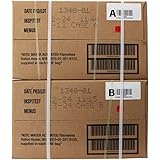Assessing the Location
Choosing the Right Spot
When it comes to creating an emergency shelter, the location is everything. From my experience, finding a safe, flat area is crucial. You want to avoid low spots that can flood and steep hills that could pose landslide risks. Look for open spaces away from heavy trees that might fall during a storm. Trust me, you don’t want to be sheltering beneath a rotting oak during high winds!
Consider accessibility as well. It’s important to set up your shelter where emergency services can easily reach you and where you can get supplies if needed. A spot close to your home can be beneficial but make sure it’s not so close that it puts you in danger if your house is compromised.
Lastly, look for natural cover. While a plain patch of ground is a good start, using the natural landscape to your advantage can make a world of difference. If you find a clearing nestled near bushes or trees, it can provide you with a windbreak and shade, which is a real advantage during tough weather conditions.
Gathering Necessary Supplies
Creating a Checklist
One of the first things I do when preparing for an emergency shelter is making a solid checklist. You’ll need basic supplies like food, water, and first-aid kits, but also things that could make life more bearable—like a portable gas stove or a camping toilet. I’ve found that preparing for the unexpected can go a long way in making the situation more comfortable.
Dive deeper into your checklist by considering the specific needs of those in your party. Do you have kids, elderly folks, or pets with you? Their needs might require additional supplies. For instance, baby formula, special medications, or even extra blankets for warmth are all things to have prepared in advance.
And don’t forget about entertainment! When I’ve had to hunker down during emergencies, having decks of cards or board games can help keep spirits high. It’s easy to overlook, but sometimes a little fun can provide significant relief in a stressful situation.
Building the Shelter Structure
Types of Shelter Designs
When it comes time to put your plans into action and build the shelter, the design you choose matters. I often opt for lean-tos or A-frames. They’re simple to make with branches and tarps, and they offer some nice protection against the wind and rain. Plus, they can be built quickly if you’re in a rush.
Another option is digging a pit or trench shelter, which can be a little more labor-intensive but offers excellent insulation from the elements. In colder temperatures, this can help keep you warm. Trust the process—once you get the hang of it, building becomes an art form!
== > What if ... Get a FREE Subscription to PREPARE
Don’t forget the importance of insulation inside the shelter. I usually add in dry leaves or grass to cushion the sleeping arrangements. It makes for a comfortable bed and can help trap heat as well. I can’t stress enough: comfort does wonders for morale!
Establishing Safety Measures
Creating a Safe Environment
Safety is paramount during any emergency, and setting up your shelter with security in mind can help ease everyone’s minds. First things first, consider the entrance. I recommend creating a clear pathway that can be accessed easily but not directly from the outside. It helps to discourage unwanted visitors and maintains a level of security.
Get Preparedness and Self-Reliance Tips. Subscribe Now!
Next, make sure you have a form of communication—whether it’s a radio or a charged cell phone. Being able to receive updates on the situation outside is vital. I often keep a small solar charger handy, just in case! That way, I don’t have to worry about draining my battery.
Lastly, I suggest keeping a lookout for potential hazards nearby. If you’re in an area prone to wild animals or even human threats, being aware of your surroundings can make a huge difference. It keeps everyone alert and can help prevent unforeseen problems.
Maintaining Comfort and Well-being
Creating a Routine
During those long hours in the shelter, establishing a routine can truly save your sanity. I’ve learned that having a schedule for meals, rest, and activities doesn’t just keep people on track; it also builds a sense of normalcy in an otherwise chaotic situation. Start a morning ritual, even if it’s just a cup of coffee or tea and some stretching; it sets a positive tone.
Consider establishing small tasks to keep everyone involved and busy. Whether it’s gathering more firewood or setting up areas for sleeping, participation helps folks feel useful and engaged. Plus, working together strengthens community bonds, which are essential during stressful times.
And of course, prioritize mental health. Sharing stories, playing games, or even practicing mindfulness techniques can lighten the mood dramatically. Emotional support is just as important as physical safety, and fostering this environment can make your time in an emergency shelter much more manageable.
FAQs
1. What is the most important factor to consider when selecting a location for an emergency shelter?
The most important factor is safety. Look for a flat, elevated area away from potential hazards like flooding and falling trees. Accessibility for emergency services is also key.
2. What essential supplies should I include in my emergency shelter kit?
Your kit should have food, water, first-aid supplies, tools for shelter building, and items for comfort, like games or books. Don’t forget any special needs for children, the elderly, or pets.
3. What is the best kind of shelter design for beginners?
I recommend starting with a lean-to or an A-frame design. They are relatively simple to create, provide good protection, and can be built quickly.
4. How can I maintain security in an emergency shelter?
Establish a secure entrance, have a plan for communication, and remain vigilant about your surroundings. Keeping a lookout for possible threats is crucial for safety.
5. Why is a routine important in an emergency shelter?
A routine helps bring a sense of normalcy and order amidst chaos. It keeps everyone engaged, can ease anxiety, and fosters cooperation among individuals in the shelter.






